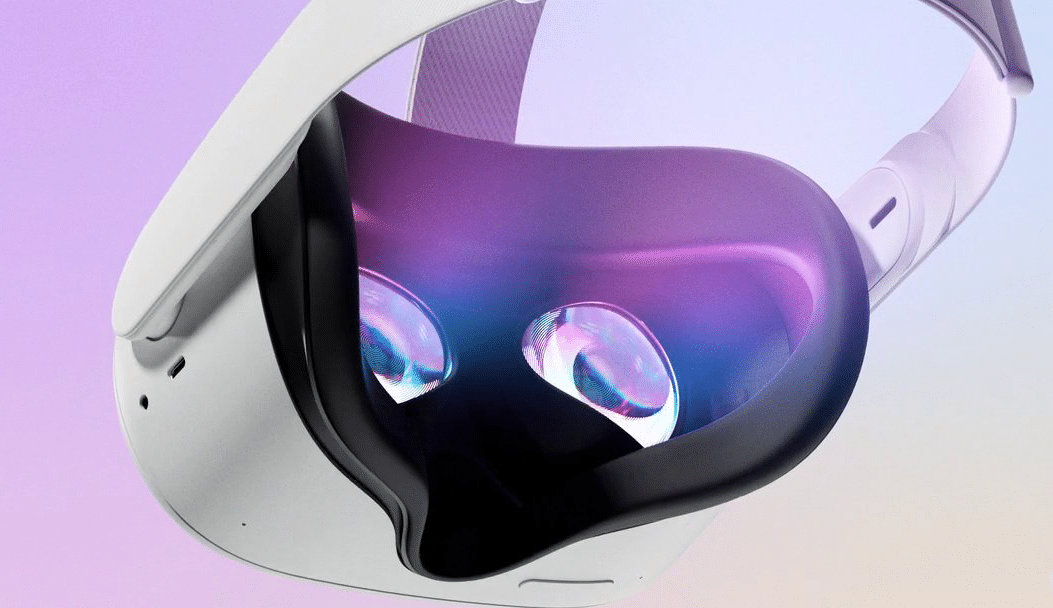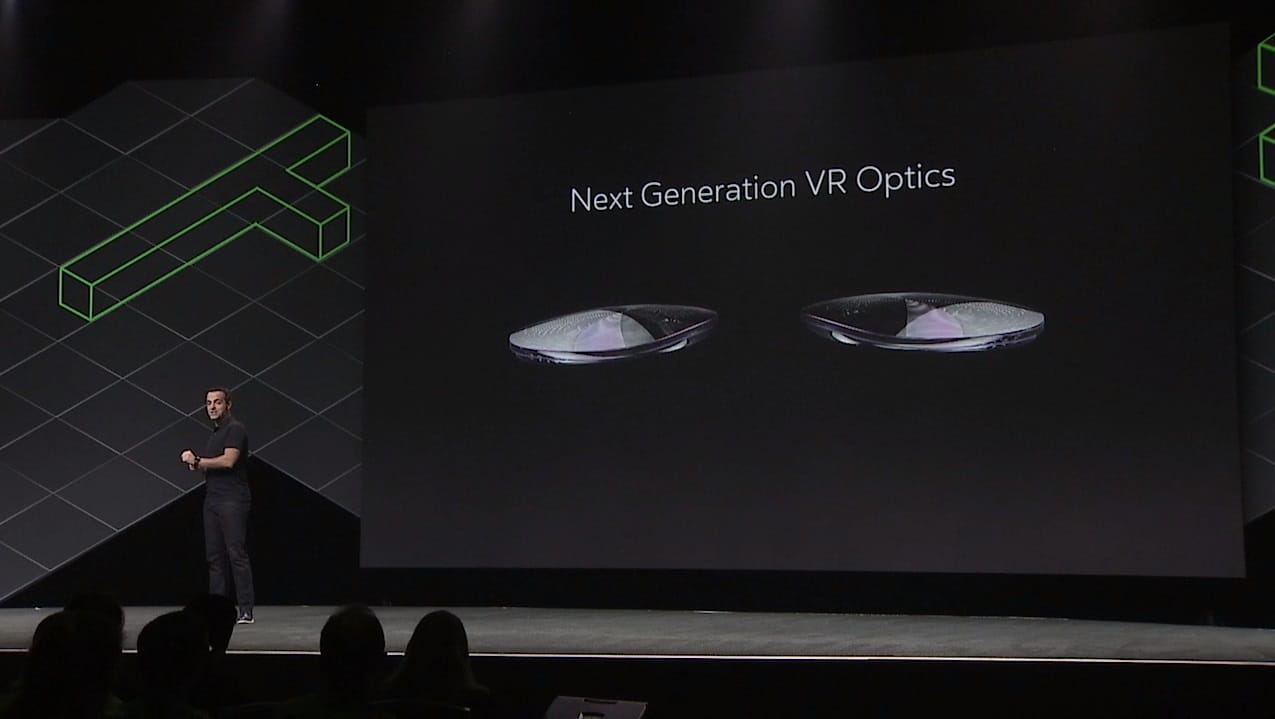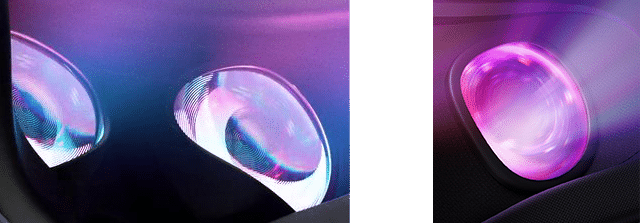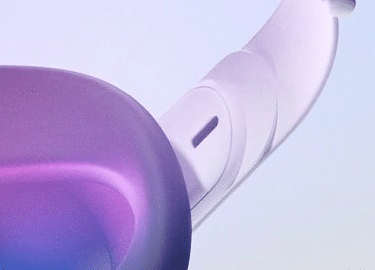Earlier this week prolific Twitter tech leaker WalkingCat shared an image of what appears to be a new Oculus Quest. Today, WalkingCat shared a rear angle of the headset, captioned ’15 Sep 🧐’.

It’s unclear whether the September 15 hint refers to a reveal, a targeted launch date, or something else entirely.
Facebook’s First New Lens Since Go?
Oculus Quest, Oculus Rift S, and Oculus Go use the same lens. Officially called ‘Super Libra G’, it was first shipped in Go (now discontinued) in May 2018.

The distance between peoples’ eyes (called Interpupillary Distance or IPD) varies, and this matters for giving them a visually comfortable VR experience. If the center of the VR lens is too far away from the eye, the wearer may see a blurry image where static objects don’t appear fully solid.
The current Oculus Quest has a lens separation adjustment slider, letting you position the lenses to align with the center of your eyes.
As we noted with the earlier leak, this new headset doesn’t seem to have a lens separation adjustment slider. Facebook told us the Rift S lenses are “best for users between 61.5 and 65.5mm” IPD, which equated to just 46% of men and 43% of women in the largest publicly available IPD dataset.

However, the feature of a lens that determines this (when adjustment is not possible) is the eye box. A smaller eyebox is less forgiving to your eye’s position, whereas a wide eyebox means you don’t have to think about the lens position as much.
The lenses in today’s leak don’t appear to be the same as the earlier Super Libra G lenses. It’s difficult to tell, of course, given the available image, but if the lenses on this new headset increase the size of the eye box it is possible a larger range of IPDs could see a clear image.
This is speculation on our part until we receive more information. It’s also possible this is just an artefact of image compression making a nose flap look like part of the body.
Integrated Audio
A horizontal slot is visible on the inside of the side strap. It’s in the exact same place as the audio ports are on the Oculus Quest and Oculus Go, so it’s safe to assume this is a new version of integrated audio technology.

On Quest & Go, it works by channeling audio from an internal speaker on each side through small “pipes”, such that you get spatial audio without headphones.
Quest’s volume and bass were improved over Go, so there could be further improvements to audio in this new headset.
Evidence Mounting Throughout The Year
A new Oculus Quest wouldn’t be a complete surprise- evidence has been building throughout the year.
Back in March, the official Oculus Developer website leaked the codename for a ‘Del Mar’ standalone headset with a developer early access program. A reference to ‘Oculus Jedi Controller For Oculus Del Mar’ was also discovered in the Oculus Mobile SDK.
In April, Gerald McAlister of RGB Schemes found a driver for the ‘Jedi’ controller within the latest firmware for the consumer Quest. We analyzed the driver and compared it to the current Touch driver, finding it may refer to a new controller with the same input scheme, but potentially improved tracking, haptics, and finger sensing.
In May, Bloomberg reported Facebook was working on a new Quest which could be 20% lighter and physically 15% smaller, with a refresh rate of 90Hz. The report also suggested the new headset would use cheaper materials and slightly improved controllers.
The leaked images seem to agree with Bloomberg’s reporting.
Finally, just last week, Japanese publication Nikkei reported that a new Oculus headset entered production this month, with production goals of 2 million units.
As with all leaks, take this image with a huge grain of salt. Even if it is real, it may not reflect the current state of the product. We’ll keep a close eye on Facebook in the coming weeks and months to bring you any official information we can find.


























